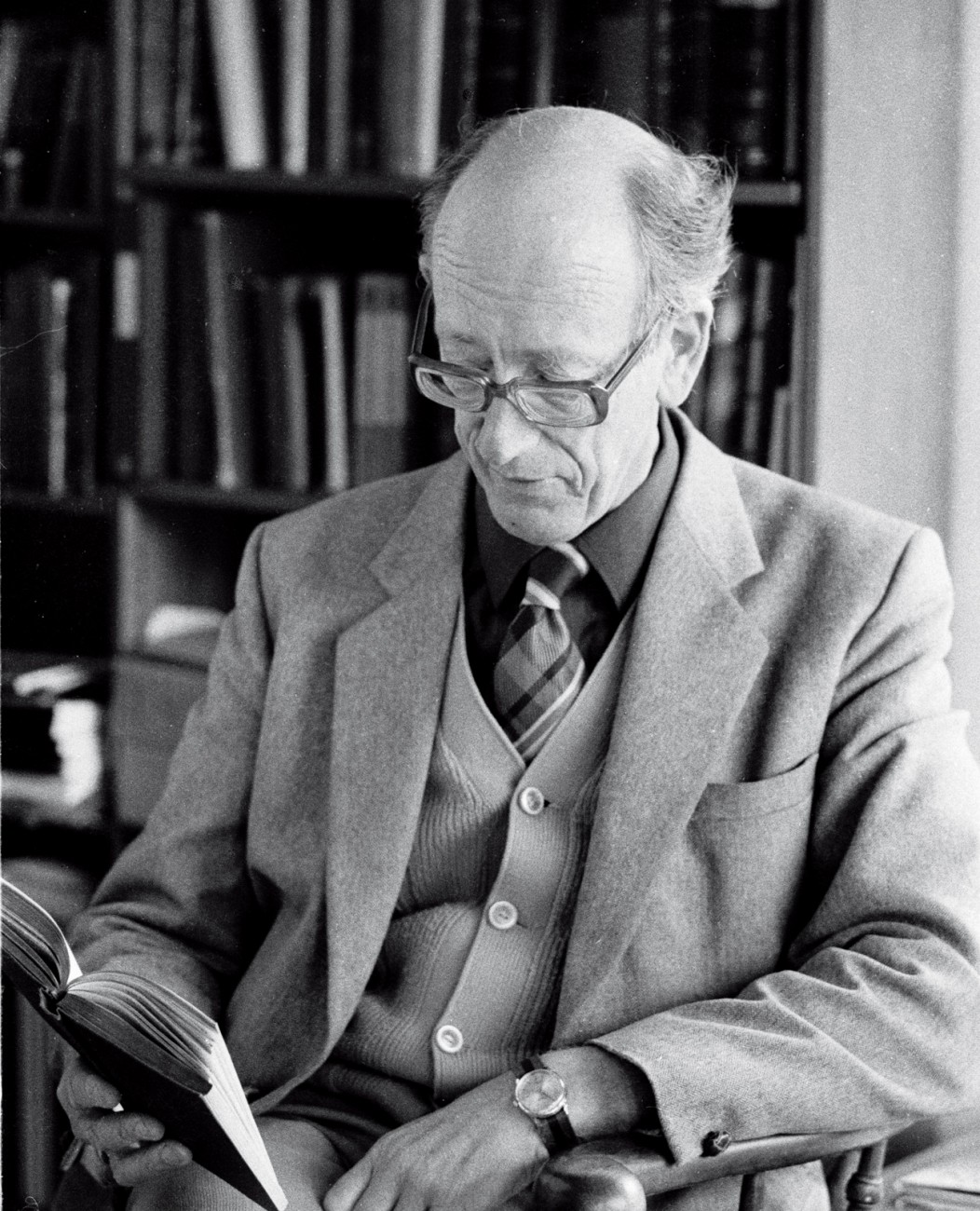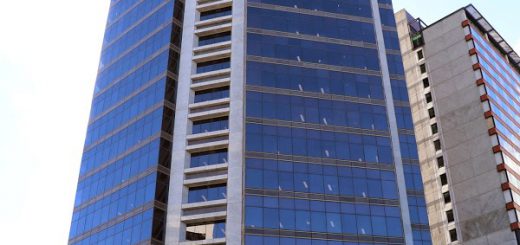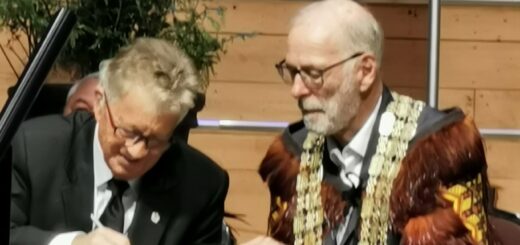Tribute to a great New Zealander – farewell Prof John Morton
There was a very large turn-out of mourners for the funeral of Professor John Morton at Saint Mary’s Anglican Church in Parnell last Friday. The size of the crowd reflected the stature of the man and the enormously high regard in which he was held – he was a truly great New Zealander.
An erudite scholar, a charismatic lecturer and New Zealand’s outstanding marine biologist of his time John Morton was also interested in a much wider field of natural history and philosophy. He wrote extensively on these subjects. He was in other words a true naturalist perhaps the last in a long line of great New Zealand natural scientists and great natural scientists of New Zealand – people like Charles Fleming, Robert Falla, Leonard Cockayne, Hotchstetter – stretching all the way back to Dumont d’Urville and Joseph Banks.
When John Morton returned from ten years in London in the early 1960s to become head of the School of Zoology and Biological Sciences at Auckland University he was one of New Zealand’s most talented up and coming academics.
Motivated by a great love, indeed a reverence for the natural world and appalled by the ever-growing assault on the natural environment John Morton soon became a conservation activist.
In 1974 in addition to lecturing biology students, organising his famous marine biology field trips and managing a department of feisty academics at Auckland University he was asked to stand for a seat on the Auckland Regional Authority. As a member of the ARA Prof Morton worked tirelessly to strengthen regional land planning and open space protection policies. Enlightened polices which the ARA became famous for – and which were inherited and carried on by its successor the Auckland Regional Council.
On the wider national stage Prof Morton led the conservation movement to a series of victories in large scale set-piece battles in the 1970’s and 80s which saved the last of New Zealand’s mainland native forests, Pureora, Whirinaki, Waitututu and South Westland from logging.
I first met John Morton in 1984. By then he was already a famous figure, widely known from his popular natural history TV programmes and for his role as a leading conservationist. Prof was a gifted TV presenter, and drawing from his years of experience as a university lecturer he was well aware of the value of applying techniques of ‘showmanship’ to help deliver his message. But perhaps it was the voice – the somewhat nasal but sonorous voice, conveying warmth, knowledge and sincerity that was his most distinctive attribute as a TV performer and public speaker.
Still in my early 30s I was the local chairman of the Forest and Bird Protection Society Waiheke section which was something of a part-time role for me in those days as I was still at sea. Waiheke Forest & Bird had led a fund-raising campaign, mainly driven by the late Joy St Paul, to purchase a block of land from the Anglican church. The land – which we called the ‘Church Block or as it is now officially known as ‘Te Hāhi Reserve’ – was adjacent to the Forest and Bird Goodwins Reserve at Te Matuku Bay.
As a distinguished life member of Forest and Bird Prof Morton came to Waiheke with other Church and Forest and Bird people to attend the opening ceremony. It was a privilege to meet him.
Long before it arrived ‘1984’ always had ominous connotations because of the George Orwell book – but 1984 actually turned out to be a portentous year for New Zealand. The ‘Year Zero’ of an economic and political revolution that would change New Zealand for ever – and I have to say not for the good.
Though none of us would have dreamed about it during that sunny morning in March, a new Labour government was soon to come to power and very much under the influence of private finance interests and neo-liberal bureaucrats in the Treasury and Reserve Bank, unleash a New Right revolution in New Zealand.
John Morton’s left wing politics were not emphasised in the obituaries but they were important to understanding the man. In the 70s Prof was a Labour supporter and no doubt like most Labour voters – and I dare say most New Zealanders – he would have welcomed the fresh new labour government which took office in July that year.
But soon it became all too clear that the radical new policies, so-called ‘Rogernomics’, being unleashed in Blitzkrieg fashion were not traditional Labour policies at all and certainly not the policies most New Zealanders thought they were getting when they voted Labour.
Prof Morton abhorred the money-driven free market and monetarist policies. He was personally affronted by them I suppose for a number of reasons – philosophical (I recall him saying once that “economics should be seen as a sub-set of ecology”), and I guess even theological. Neo-liberalism offended him intellectually and emotionally and he despised what ‘rogernomics’ was doing to the country.
In 1989 with state assets like Telecom being sold off – and the welfare state being dismantled it was the final straw, John Morton laid aside his books and his microscope and came down from the ivory tower once again to join the fightback. Prof became a founding member of the NewLabour Party which soon became the core of the Alliance. In September 1990 I recall the Prof speaking with Jim Anderton, Phil Amos and Cr Sandra Lee at a NewLabour election meeting in a crowded Surfdale Hall on Waiheke in support of a local parliamentary candidate Cliff Robinson.
In December 1991 when ARC member for Auckland Central Hiwi Tauroa suddenly resigned I was selected as a candidate for the ensuing by-election by the newly formed Alliance. In my election brochure, I was supported by people like Bruce Jesson, Bruce Hucker, Phil Amos – and Prof. John Morton.
Late in 1991 I recall calling at Prof’s Castor Bay house to collect his carefully type-written testimonial.
The Prof wrote. “I am glad Mike Lee is standing for the Auckland Central seat on the ARC for two reasons: Auckland needs better regional government, and Mike Lee will have much to offer a ‘new look: ARC’. He knows local issues and has years of local experience, that will fit into the wider regional picture. Regional Councils have many responsibilities for environmental care. Yours is the Hauraki Gulf, with its splendid heritage of sailing water and islands. The City and the region haven’t in the past protected the Gulf enough. Today it is at the mercy of the port company, to implement the wrong, short-sighted approval given them to dump dredgings in the Gulf waters. Mike, by his track record and years of local battling, has earned your confidence and your vote for the ARC.”
I of course was still completing a biological sciences degree (as an adult student after my time at sea) at the Auckland University School of Biological Sciences where Prof was Emeritus Professor and still occasionally appeared. I was privileged to see a lot more of him during my first years on the ARC – especially when I was chairman of Regional Parks.
I recall speaking alongside Prof Morton, Governor-General Cath Tizard, and the late chairman of the ARC Phil Warren at the launch of the wonderful ARC published book Natural History of Auckland which John, supported by other leading Auckland natural scientists and the artist Ron Cometti helped write and edit. Prof and I served also served together on the committee of Project Crimson. Any meeting in which Prof featured could always been guaranteed to be lively – and stimulating – with always a few laughs.
I recall one Project Crimson meeting in which an artist’s depiction of a possum was shown to the committee – this to be published in NZ Geographic. The painting was essentially well-meaning propaganda, emphasising the villainous predatory nature of possums – the snarling animal’s face almost reptilian. I was critical of this approach and said so and then waxing lyrical, went on to point out that the brushtail possum was a native animal of the Tasmanian rainforest, perfectly adapted to its environment and it wasn’t its fault that it was brought to New Zealand. Furthermore while we need to remove it from our environment we should always respect the animal for its intrinsic worth etc etc. To which Prof Morton responded “the only good possum is a dead possum”. That quickly settled matters. I beat a hasty retreat and to general laughter said “Having said that -I’ll be following the Prof on this one.”
In 1995 at my request Prof readily agreed to join me on the ‘Save Our Islands Trust’, along with some other distinguished Aucklanders like Phil Amos, Ted Lees and Gordon Hodson, in a campaign to secure Kaikoura Island in public ownership (a campaign which was eventually successful). I recall Prof making a typical eloquent pitches to the Auckland City Council and to the ARC for support to buy Kaikoura.
Always a drawcard for any meeting and always willing to help out what he considered a good cause, I remember he turned out in 1996 again to oblige me to speak at an election meeting in Whangaparaoa where I stood for the Alliance as a candidate for Rodney.
In more recent years sadly as his health became more fragile, he gradually withdrew from public life. In 2005 I recall driving out to see him in his home at Torbay to discuss his ideas on protection of privately-owned open space.
In 2008 by then quite frail, he granted me a great favour by coming out in public for one last time along with with his wife Pat – to attend a reunion celebration of the 15th anniversary of the publication of the Natural History of Auckland at the ARC Botanic Gardens. Here I think surrounded by an admiring audience of scientists, regional councillors, parks rangers and members of the public he made his last speech.
Prof Morton was a great leader, a great teacher, a great writer. He was the author of natural history classics like ‘The NZ Seashore’ (the famous ‘Morton & Miller) and ‘the Pacific Seashore’. His writing He also wrote newspaper columns on a wide range of subjects. His writing enriched by his vast knowledge of history, literature, philosophy and theology. I need to mention that Prof was also religious man with a deep faith in Christianity.
His interest in theology was probably the least known aspect of his life (at least to me). But in the eulogies at his funeral Prof Morton’s interest in theology was recalled. In his eulogy Bishop John Paterson told mourners that Prof Morton’s knowledge of theology was highly respected in the Anglican Church and by all accounts Prof could hold his own in debate with Bishops and leading church theologians. In the 1970s on top of all his other activities Prof Morton somehow became deeply involved in a world-wide debate within the Anglican Church about an early Church controversy, the Filioque.
The word Filioque which is Latin for ‘and the Son’ – related to the Nicene Creed and the procession of the Holy Ghost from God the Father. In the 6th century the word Filioque had been added to the Latin version of Nicene Creed by the Western Church – much to the horror of the Eastern Church based in Constantinople which adhered to the original Greek version. In 1059 this argument led to a formal schism between Roman Catholicism and Eastern Orthodoxy – a schism which has lasted to this day. In the late 1960s (perhaps somewhat belatedly) theologians in the Anglican Church in England recommended the Filioque word be removed from the Anglican recital of the Nicene Creed. For reasons (which must have been interesting) but ones he clearly felt very strongly about, the Prof argued eloquently – and successfully against the move.
At the funeral I was intrigued to hear about this side of the Prof. I recall in October 2008 after the Natural History of Auckland reunion we rode back together in a taxi which we had arranged to take Prof and Pat home. We chatted away happily until I was dropped off at the ARC, talking mainly about politics and the old days of the ARA. It was to be our last conversation. I wish I had known then about the Filioque then though – that would have made for an intriguing conversation.
Prof Morton leaves his wife Pat (very much the strong woman behind the great man) and his children Clare and Rob. Both Rob and Clare spoke at the funeral. Rob who is a personal friend and long time Waiheke resident spoke superbly of his life with his father . But as I left the church on that sunny autumn afternoon to join with other mourners to lay a kowhai twig on Prof’s plain pine box coffin and to murmur a last “goodbye Prof”– I felt the ones left behind were the ones to be pitied. We have lost our great leader – a leader who generously shared with us his courage and his vision. We were better people for knowing Prof Morton and the world a better place because of him. As I wrote in his memorial book “Tribute to a great New Zealander – we are all diminished with the passing of Professor John Morton”





Dear Mike,
A wonderful tribute to an inspiring man.
Apart from all the things that you mention, he left another legacy for which the extended Morton family are very grateful. This was a well researched family history of the Morton’s (his and my ancestors) who arrived in Auckland from England in 1863 on the Tyburnia.
Regards,
Bridget Winstone nee Morton
Thanks Bridget,
there are special people who have an ability to make one feel that life is an exciting adventure – and to know them and work with them was to be included in that adventure. Prof Morton was one of those special people. As I felt when I left the church – ‘mourn for ourselves- we are the poorer for his going’.
Kind regards,
Mike